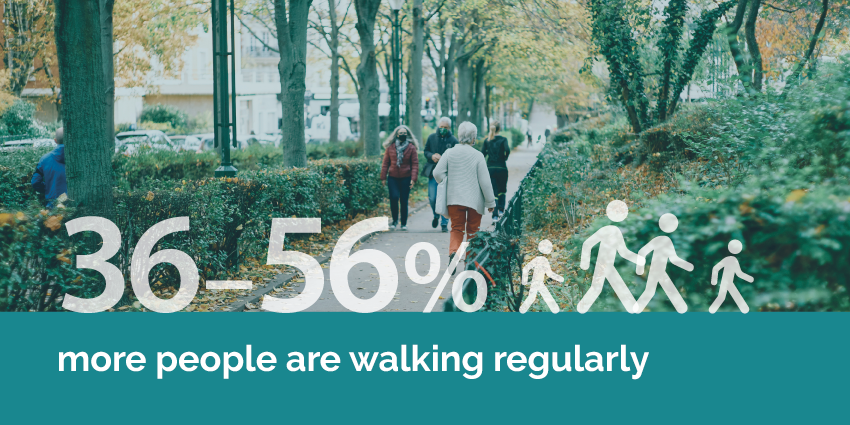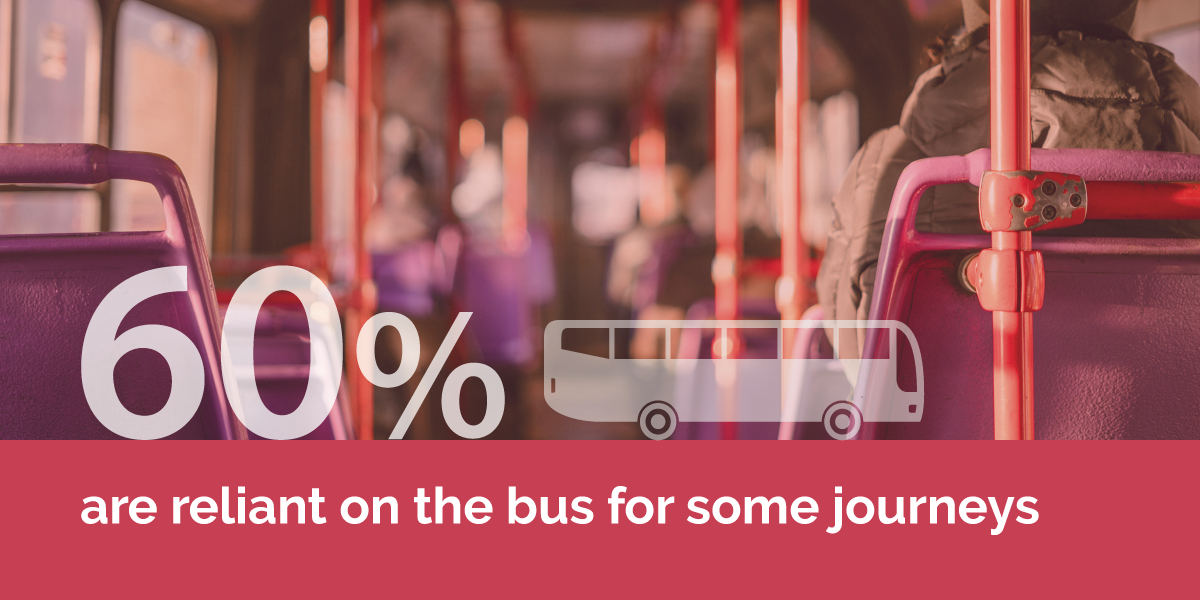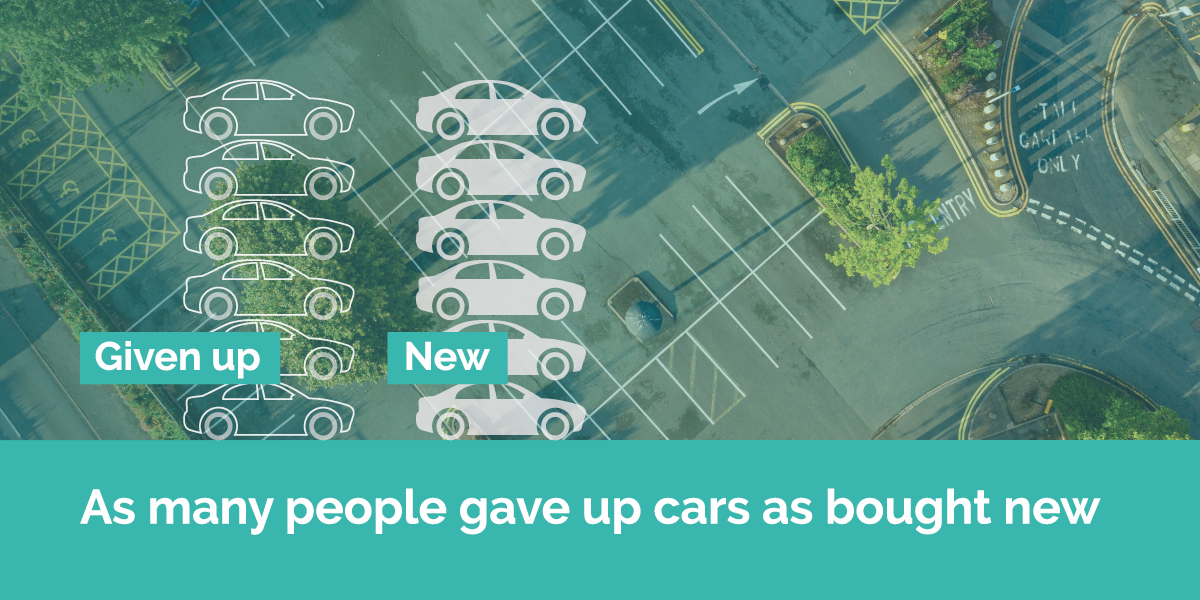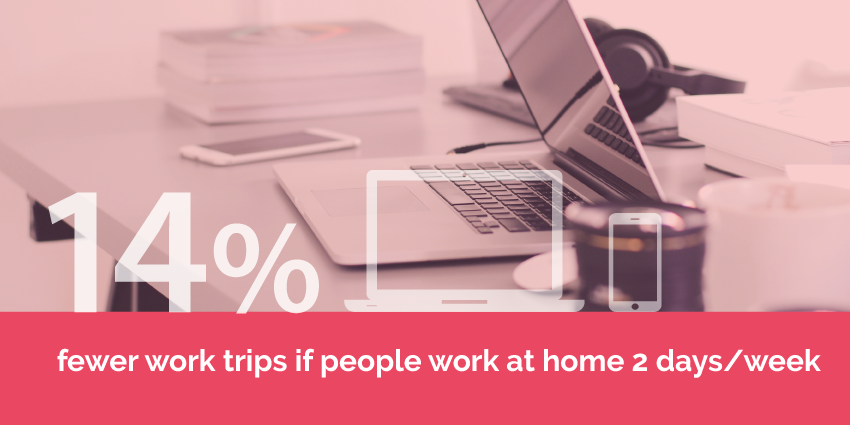Greg Marsden, Jillian Anable, Iain Docherty and Llinos Brown
Covid-19 has forced countries around the world to make massive adaptations to the normal way of life to reduce the risk of the spread of the virus. This briefing sets out new insights into how people’s travel patterns have adapted over time and why. It draws on national data sources and a major panel survey of over 6000 people conducted in July and December 2020. It calls for a major realignment of investment and policy to ensure that we do not return to the overcrowded, congested, polluting and unhealthy transport system that people had come to accept as inevitable.
Active travel: walking is the big winner

- Walking is the only way of getting around that more people are doing more regularly than they did before the pandemic. 56 percent of our respondents are walking three times a week or more, up from 36 percent pre-pandemic. This massive shift has been hidden in plain sight because walking so often gets ignored in what gets counted.
- Cycling levels have also increased relative to last year. This is despite cycle commuters being very likely to work from home. The warm conditions of the first lockdown saw levels increase two to threefold. Even in winter levels held up remarkably well.
- The UK and Scottish Governments invested to support the rapid introduction of schemes to provide more space for walking and cycling. This supported the trips that people have wanted to make more of and offers great public health outcomes.
- The introduction of new cycling and walking schemes was done in a hurry and some were not well used or had design faults. However, we found that people want to see more reallocation of space to active modes. Support for measures which improved walking and cycling outweighed objection to them by a factor of almost 2 to 1. The vocal objectors are in the minority.
Public transport – a critical service but will it recover?

- By the end of 2020, £5.4Bn of additional funding support for public transport had been provided or committed by government. This enabled bus operators and the rail industry to provide services that complied with social distancing rules. Falls in patronage of up to 95 percent meant that no public transport services were commercially viable. Without this support the sector would have collapsed.
- The services provided have been proven to be essential, however. 60 percent of bus users reported having no alternative but the bus for the journeys they made during the pandemic. Just under 60 percent of rail users reported the same for their rail journeys.
- People were asked to avoid using public transport if they could and to travel only where necessary. Rail use has on average been 25 percent of the previous year. Bus use outside and in London has on average been 35 and 46 percent of the previous year respectively.
- Whilst bus use recovered to around 60 percent of 2019 levels in the early Autumn, rail did not get above 43 percent at best. Some people have already come back to public transport but the picture looking ahead is very difficult.
- Recessionary effects, continuation of some level of working from home, a desire to avoid overcrowded places and some vulnerable groups who seem likely to stay away from busy services for longer mean that public transport will require substantial transition funding for some time to come. Without it, there are risks of a negative cycle of route closures and further decline in use.
- Public transport will also need to adapt and continue the developments in real time crowding data to reassure travellers and provide more flexible ticketing if fewer people are commuting five days a week.
The big switch to car has not happened

- It was assumed that the switch away from public transport would mean everyone turned to the car. This has not been the case. Car traffic averaged 70 percent of pre-pandemic levels and the morning peak never returned to anything like pre-pandemic conditions.
- People bought fewer cars nationally with a 35 percent drop in new car purchases and an almost 15 percent drop in used car purchases in the year to February 2021. Many people have deferred decisions about whether to buy, replace or get rid of their cars.
- Our research found that as many people gave up a car as bought one. Around a third of the decisions around car increase, decrease, retention or borrowing were impacted by Covid-19. Covid-19 was reported as being more important a factor in reducing car ownership than it has been in increasing it.
- Because of the potential for some journeys to be replaced by online ways of doing things, it is not inevitable that car traffic will return to pre-pandemic levels.
Increasing home working and shopping – how much could stick?

- Prior to the pandemic just over 25 percent of the workforce had some experience of working from home with around 12 percent of the workforce working at home at least once in the survey week. By October 2020 we estimate the number of days worked from home had quadrupled. This has been a huge shift and going back to pre-pandemic patterns of work is unthinkable.
- How much working from home is possible depends on the structure of the local and regional economy. London, Bristol and Edinburgh all showed levels of home working all well above our survey average with Lancashire, Ayrshire and Aberdeen well below.
- Car commuters (both drivers and passengers) were doing the least amount of working from home in October. Those who, pre-Covid, were more likely to be car commuters were most likely to be the ones physically travelling to work.
- We estimate that if people who used to commute by car and who are now working from home were to continue to do so for two days a week, almost 14 percent of morning car trips would be cut. This could result in traffic reductions similar to those seen in school half terms. The prize of continuing some working from home is quite significant in congestion and carbon emission terms.
- Online shopping has continued its rising trend, jumping from 18 percent of all national retail sales by value before the pandemic to 34 percent by January 2021. Food shopping online has more than doubled to over 10 percent of food sales. Non-food has been as high as 45 percent of sales.
- Around a quarter of our respondents said that they will continue to shop online more for groceries after lockdown and this held level over 2020. More than a third of our respondents said they would continue to buy more online for non-food and this rose by 5 percent over the year. The trend to buying online has been significantly accelerated.
- There is both a clear need and an opportunity to re-think the balance of retail, office, residential and recreational space in our town and city centres.
Where next? Major risks of taking the wrong recovery path
The actions taken by the UK and Scottish Governments to date have been critical in supporting public transport and boosting active travel. However, the direction of the post-pandemic recovery has yet to settle and there are a number of interventions which suggest that the opportunity for a genuinely ‘green’ recovery is about to go to waste. Four indicators of this are the actions of the UK government to:
- Continue with above inflation rail fare rises of 2.6 percent in England and Wales (RPI+1 percent).
- Freeze fuel duty for the 11th consecutive year.
- Maintain a £27bn major roads programme when we have seen clearly that much of the business and commuting travel on which it is predicated could be done virtually.
- Consulting on the reduction of Air Passenger Duty for domestic flights.
The Climate Change Committee’s analysis shows that 30 percent of the emissions reduction from transport in the period to 2029 is expected to come from behaviour change and demand reduction. Such ambitions at a local scale can mean triple figure growth in public transport which may now be difficult to achieve. Ambitious walking and cycling plans are already part of future climate plans. The only option to fill the gap is to capitalise on the opportunity for greater home working.
If this can be achieved then the bonus is that large parts of the major long-distance infrastructure investment funds could be refocused on high quality liveable neighbourhoods and safe routes to schools and town and city centres. These have the potential to benefit everyone, they have popular support and they can support local jobs and neighbourhood and town centre renewal.
Such an approach would also be a more resilient response to the pandemic, building up the fitness of individuals and communities and enabling us to be more nimble in adapting to future outbreaks of a highly transmissible nature and other disruptive events. Building back better needs to be building back differently.
Full report
- See the full report: Report: At a crossroads – Travel adaptations during Covid-19 restrictions and where next?
Publication details
Marsden, G., Anable, J., Docherty, I., Brown, L. 2021. At a crossroads: Travel adaptations during Covid-19 restrictions and where next? CREDS Policy brief 015 | March 2021. Centre for Research into Energy Demand Solutions: Oxford.
Banner photo credit: Alireza Attari on Unsplash
